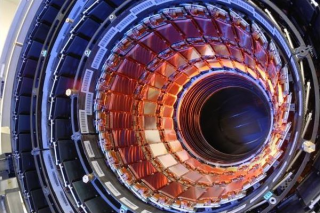Gravity Dynamo
 John Swain, a staff member at Boston University, derived a series of equations for the gravitational field from the general theory of relativity (GTR), which attributes electromagnetic properties to a gravitational field.
John Swain, a staff member at Boston University, derived a series of equations for the gravitational field from the general theory of relativity (GTR), which attributes electromagnetic properties to a gravitational field.In particular, according to these equations, it is possible to build a “gravitational dynamo of the machine”. By analogy with the electromagnetic field, driving massive particles around a closed circuit around a core of a certain material (by the way, scientists have yet to determine this material), you can get a new field that generates gravity. In the case of a good experiment, which is possible to test at the Large Hadron Collider, mankind will learn to literally get a lot of "nothing". At the moment, the theory of gravity does not provide for the existence of a "pairwise" gravitational field, as it happens in electromagnetism.
In recent decades, scientists have been struggling with the creation of the so-called “Theory of Everything”, which unites gravitational, electromagnetic and nuclear interactions. At the moment, a significant shortcoming of all theories available is the lack of explanation of the phenomenon of "quantum gravity". Since the gravitational field is very weak, but at the same time very specific - its behavior on microscales cannot be described by conventional theories applicable in the macrocosm.
If scientists confirm this phenomenon, it will be perhaps the biggest discovery in the framework of fundamental physics in recent decades.
')
The preprint of the work can be seen on the website arXiv.org here.
Source: https://habr.com/ru/post/98515/
All Articles